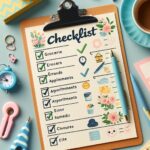Our Methods
The Purpose of Assessment Tools
Assessment tools form a critical component of our procedural framework as they provide a means to evaluate and measure the performance and progress of our efforts. These tools help us achieve our defined goals and ensure we are moving in the right direction.
The Value of Assessment Tools
Assessment tools enable us to accurately track progress and identify areas needing improvement. They allow us to monitor the advancement of our objectives and determine whether we are effectively meeting our targets.
Examples of Assessment Tools
- Multiple-Choice Tests: These are used to measure students' knowledge. By posing specific questions, we can evaluate their understanding and assess their achieved learning level.
Targeted Intervention Methods
Targeted intervention methods are powerful tools for addressing specific challenges or issues. These methods enable us to achieve our objectives effectively by focusing our efforts on particular areas.
Examples of Targeted Intervention Methods
- Structured Approaches: Using a structured approach to tackle a problem allows us to monitor the process, adjust our course as needed, and adapt interventions to address emerging challenges.
- Specialized Practices or Programs: Designed to address specific issues, these tools provide effective interventions to target challenges and help us achieve our goals.
Checklists
Checklists are designed to assist parents in recognizing whether their child may need further evaluation by a specialist due to potential difficulties. As parents, it can often be challenging to determine whether a child’s weaknesses fall within normal developmental ranges or require intervention. Checklists help guide this decision-making process.
Conclusions and Call to Action
Assessment methods, targeted intervention strategies, and checklists are essential tools for measuring progress, achieving goals, and ensuring the effectiveness of our efforts.
As professionals, it is crucial to use these tools thoughtfully and skillfully. By leveraging these resources, we can address the challenges we face and achieve the desired outcomes.




